Datebook: African American film tribute, an artist exchange with Chicago, a monumental L.A. sculptor
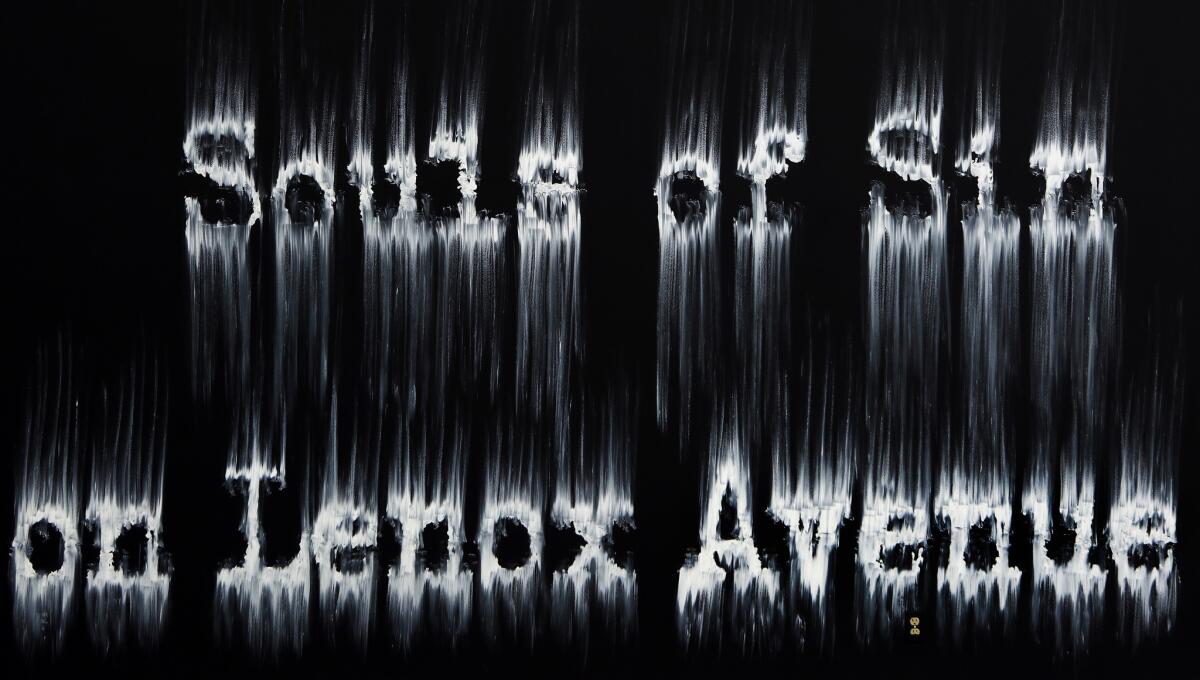
A new spate of shows at the California African American Museum. A gallery exchange in Culver City. And early works by an important L.A. sculptor. Here are 10 exhibitions and events to check out in the coming week:
“Gary Simmons: Fade to Black,” at the California African American Museum. In a new lobby installation — one that takes full advantage of the size and scale — Simmons pays tribute to forgotten African American actors and films. On a black background, the L.A. artist features the titles and names of films and individuals important to the early days of Hollywood history but, over time, have been forgotten. (Times reporter Deborah Vankin wrote about it.) The installation offers a good point of connection with the new exhibition “Center Stage: African American Women in Silent Race Films,” which features posters and screenings of pioneering films. Also on view is a pretty terrific exhibition of portraiture called “Face to Face,” featuring standout works by Lynette Yiadom-Boakye, Titus Kaphar and Mequitta Ahuja. The Simmons installation is on view through July 2018; “Face to Face” is up through Oct. 8 and “Center Stage” through Oct. 15. 600 State Drive, Exposition Park, Los Angeles, caamuseum.org.
“Mutual Admiration Society,” at Susanne Vielmetter Los Angeles Projects. The Culver City gallery is doing an exchange with Corbett vs. Dempsey, a Chicago-based gallery, that will bring the Chicago gallery’s artists to L.A. and send the L.A. gallery’s artists to Chicago. On view at Vielmetter will be works by a trio of artists: Chicago-based painter Margot Berman, who will be showing a series of head shot-style paintings of women that combine expressive brushstrokes with fine detail; New York sculptor Arlene Schechet, whose objects features a mix of ceramic with wood, painted metal and found bits; and the Chicago-based John Sparagana, whose work explores the ways in which images are employed in contemporary media. Opens Thursday and runs through Aug. 19. 6006 Washington Blvd., Culver City, vielmetter.com.
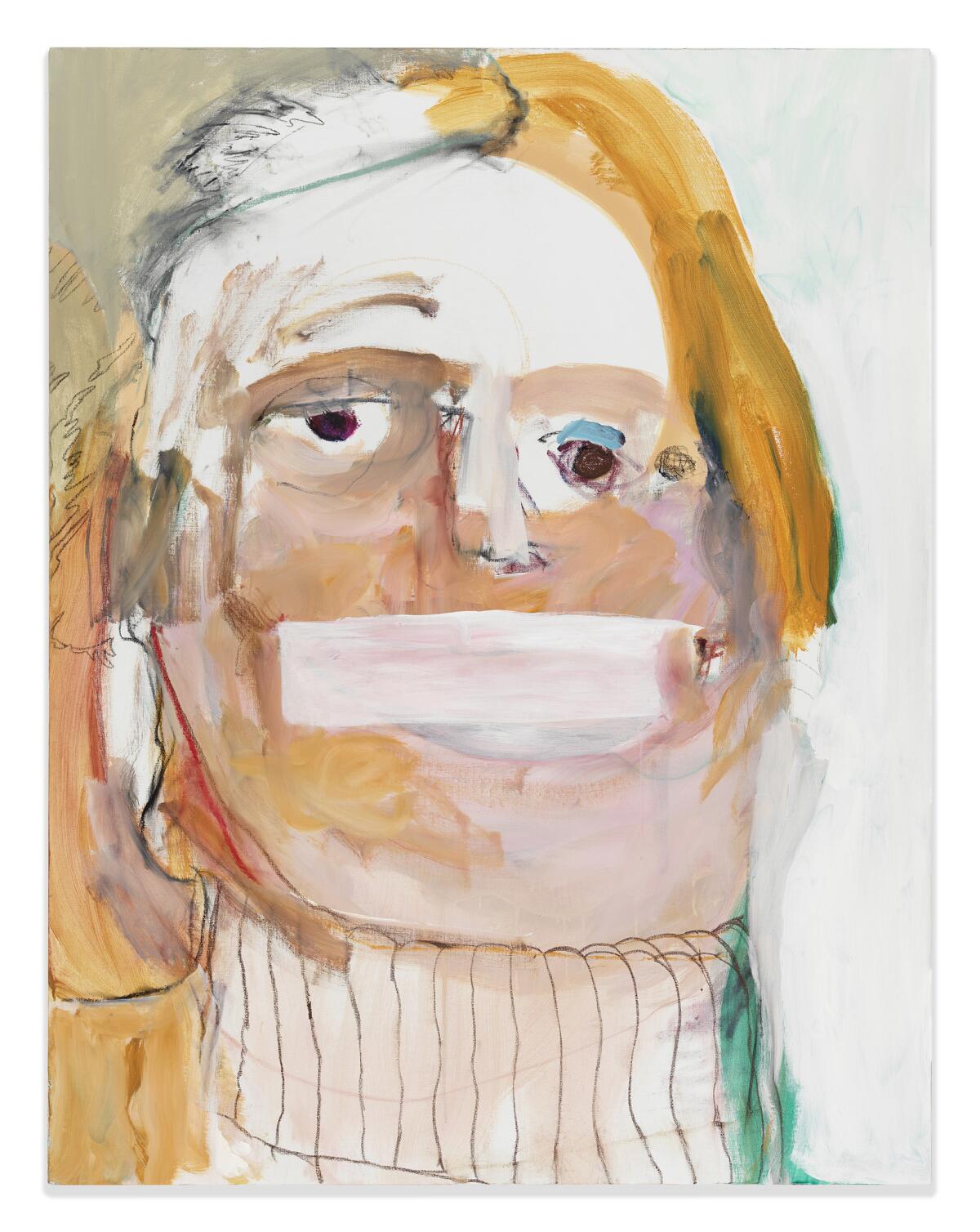
“Summery Appeal,” at the Good Luck Gallery. Curator Doug Harvey has organized a group exhibition that brings together pieces from several Southern California Progressive Art Studios, nonprofit programs geared to artists with developmental disabilities. Taking the theme of summer — and ideas of warmth and leisure — the show features 50 artists, including figures such as Dru McKenzie, Jackie Marsh and Lupe Carbajal. Opens Saturday at 7 p.m. and runs through Aug. 27. 945 Chung
John Mason, “Sculpture: 1958-1969,” at Kayne Griffin Corcoran. An exhibition of key works by the Los Angeles sculptor (who showed at Ferus Gallery back in the day) gathers works from 1958 to 1969 — monumental pieces that often explored the limits of his materials. Included in the show, organized by former L.A. gallerist Frank Lloyd, will be a pair of early vertical sculptures that bear totemic qualities. Opens Saturday at 5 p.m. and runs through Aug. 26. 1201 S. La Brea Ave., Mid-Wilshire, Los Angeles, kaynegriffincorcoran.com.
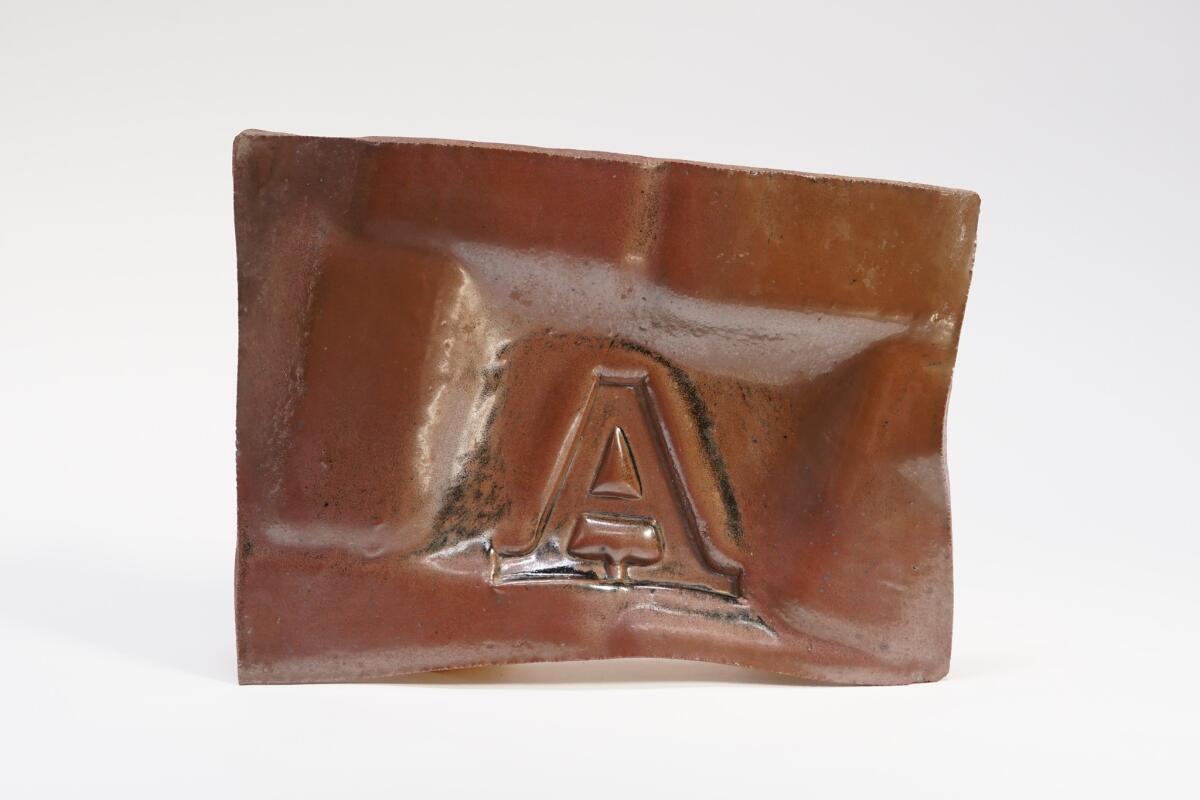
“Impermanence,” with Barbara T. Smith, John Coplans & Hannah Wilke, at Cirrus Gallery. The trio of artists in this show will probe issues of change and transformation as reflected by the human body. Smith presents her aged hands in images inspired by her Xerox portraits, Coplans captures the evolution of his own body as it ages in photographs captured over a 20-year time span, and Wilke’s full-color images record the changes her body underwent during cancer treatment. Through Aug. 19. 2011 S. Santa Fe Ave., downtown Los Angeles, cirrusgallery.com.
Molly Surno, featuring Brian Chase, “Me of We,” at the Getty Center. As part of Friday Flights, the interdisciplinary performance series held at the Getty every summer, the museum is putting on a trio of performances. “We of Me” is a collaboration between artist Molly Surno and musician Brian Chase (of the Yeah Yeah Yeahs), featuring 20 men in a choreographed soundscape. Plus, there will be shows by the L.A. artist collective Institute for a New Feeling and Sun Araw, the psychedelic musical project by L.A.-based artist Cameron Stallone. Friday at 6 p.m. 1200 Getty Center Drive, Brentwood, Los Angeles, getty.edu.
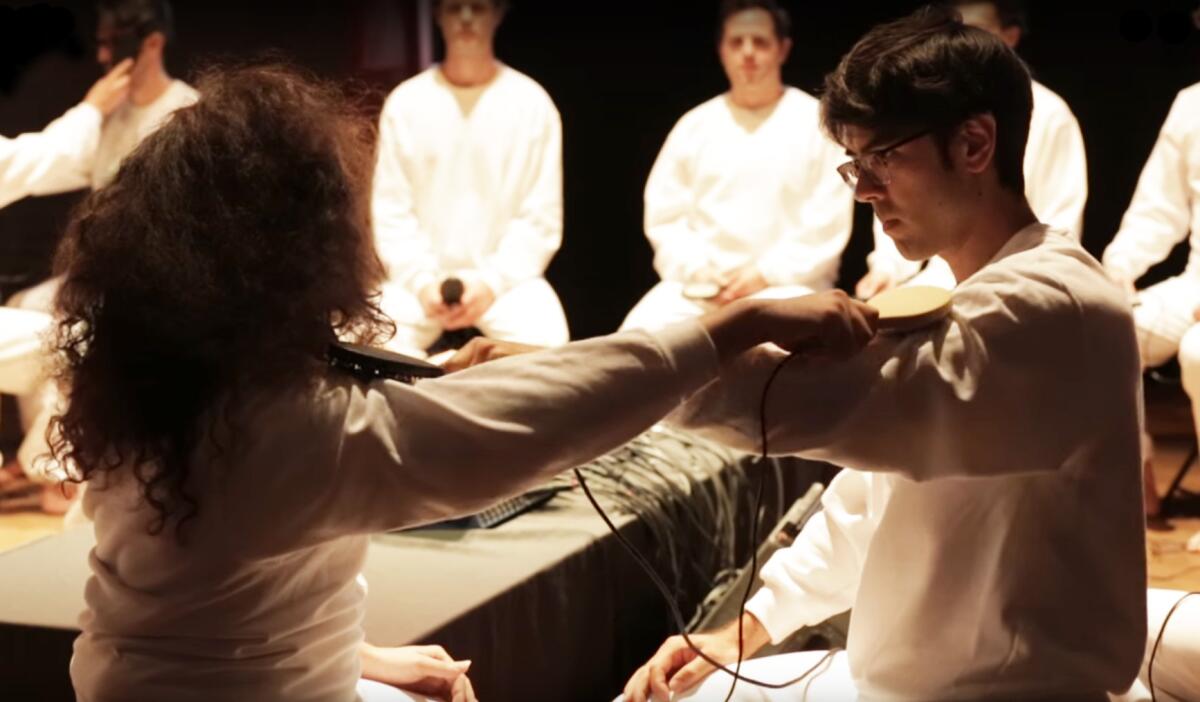
Sam Durant and Timothy Phillips, at Art Catalogues at LACMA. The L.A. artist, whose work often takes on complex issues of history and race, will be in conversation with Timothy Phillips, the founder of the nonprofit Beyond Conflict, about the role of art in addressing social conflict. 4 p.m. Sunday, Ahmanson Building, 5905 Wilshire Blvd., Mid-Wilshire, Los Angeles, lacma.org.
“The Fabulous Six,” at Feral Projects. The debut show at this new project space devoted to exhibiting women of color will feature work by April Bey, Audry Chan, Farrah Karapetian, Holly Tempo, Mary Anna Pomonis/Allison Stewart and Sandy Rodriguez. Opens Saturday at 2 p.m.; at all other times by appointment only (email feralprojects@gmail.com). Runs through July 29. 4107 S. Hobart Blvd., Vermont Square, Los Angeles, facebook.com.
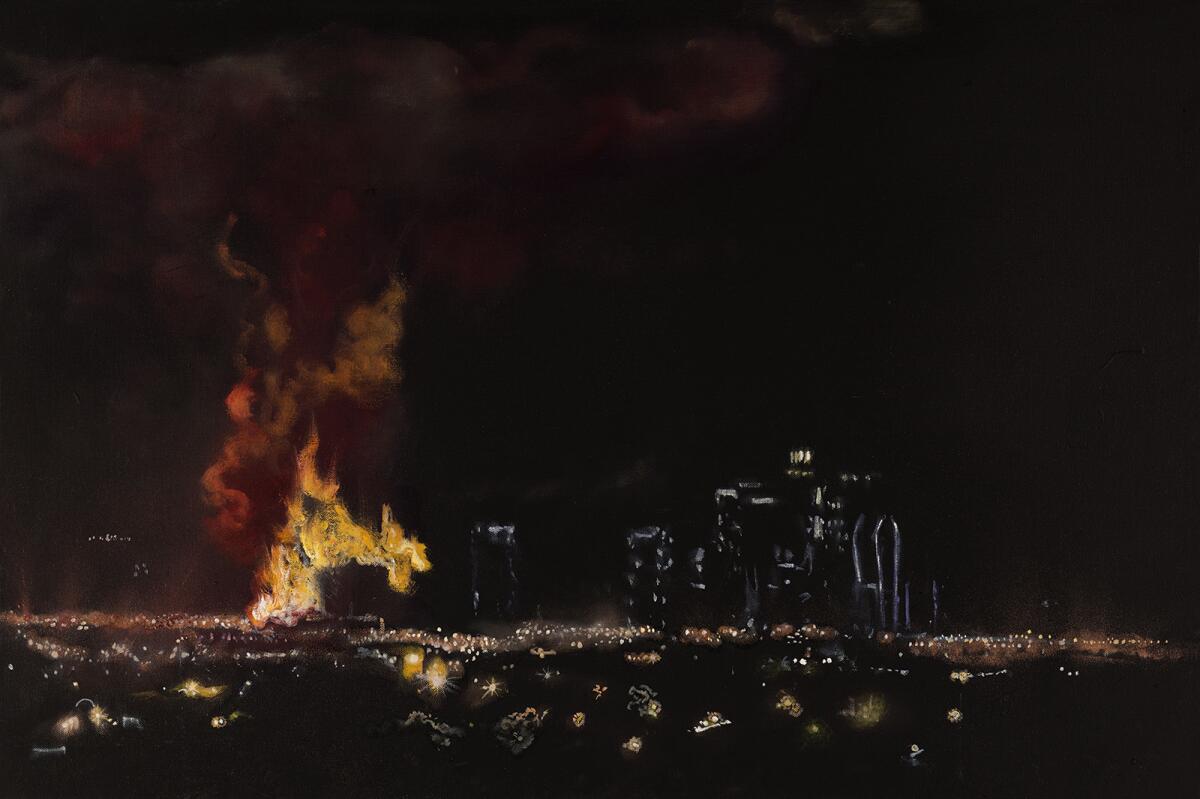
Marcos Rios, “My mind is alive with thoughts of my sadness,” at Mandujano Cell. Rios creates theatrical installations — out of photography, sculpture and painting — that employ slapstick to explore heavy topics such as failure, death and despair. Opens 9 p.m. Saturday and runs through Aug. 26. 171 N. La Brea Ave., No. 204, Inglewood, mandujano-cell.com.
“Pow! Wow!” in Long Beach. The public mural series held in Long Beach every year is back with a series of nearly two dozen new murals in locations around the city, including parking garages and underpasses. Artists begin producing murals on Sunday through July 22. Murals will be on view indefinitely in locations around Long Beach, powwowlongbeach.com.
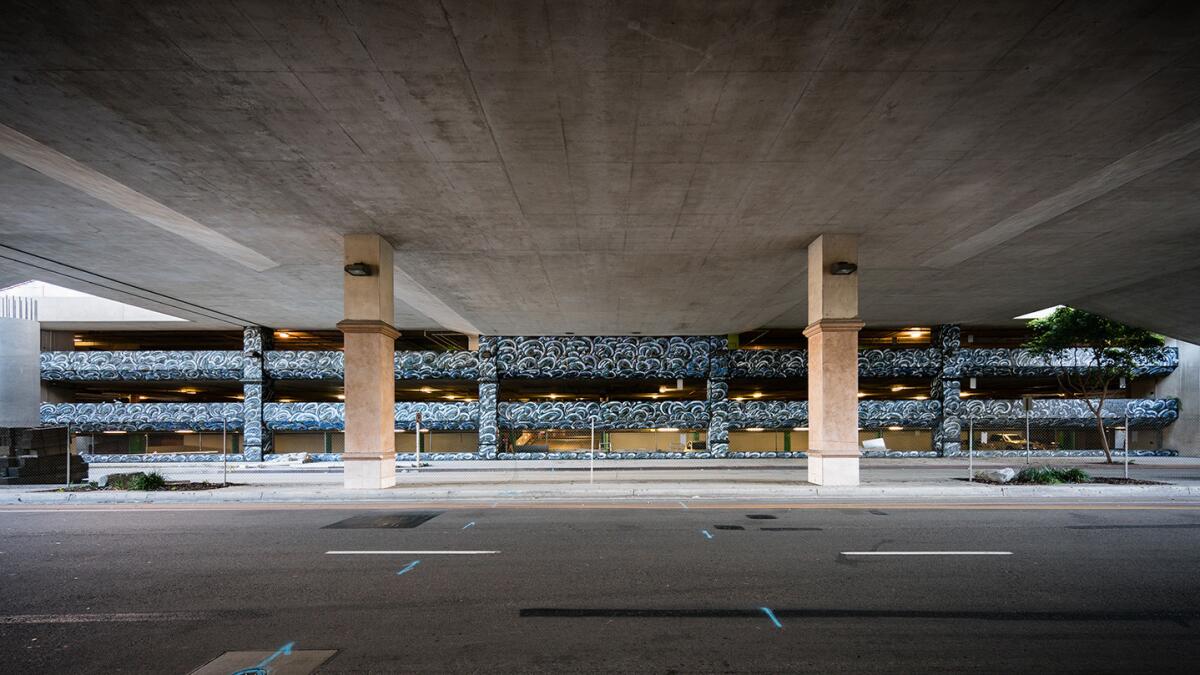
Last chance
John Baldessari, “Eight Colorful Inside Jobs,” at Mixografia. This exhibition features works from the more than two-decade-long collaboration between the California conceptualist and the innovative printers at Mixografia, known for creating paper works with deep texture (or illusions of texture). The series on view presents shapes in simple forms in solid basic colors. Through Saturday. 1419 E. Adams Blvd., Central-Alameda, Los Angeles, mixografia.com.
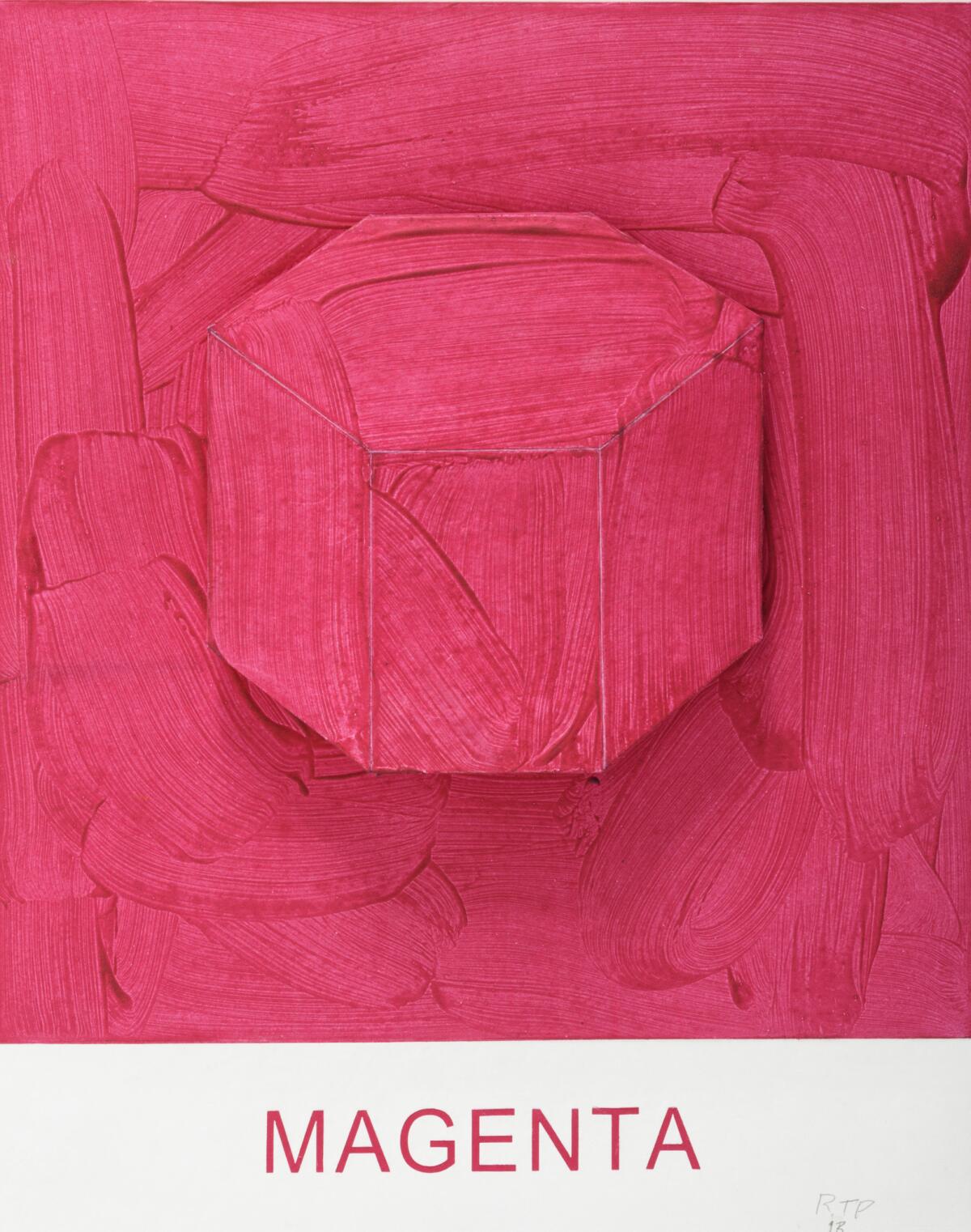
An Te Liu, “Transmission,” at Anat Ebgi. Liu is a Toronto-based artist whose bronze and ceramic works are carved and cast from mundane materials such as plastic foam. His first solo show at Anat Ebgi gathers a number of his trophy-like works. Through Saturday. 2660 S. La Cienega Blvd., Culver City, anatebgi.com.
“Vernacular Environments, Part 1,” at Edward Cella Art & Architecture. A group show brings together works from the 1960s to the present in ways that explore issues of environment and the ways in which humans shape it. Serving as a cornerstone to the exhibition is Robert Smithson’s film “Spiral Jetty,” about his renowned piece of land art of the same name. Other artists in the show include sculptor Dan Graham, composer and video artist Christian Marclay, photographer Stephen Berens and conceptualist Clarissa Tossin, who created a floating sculpture based on Brazil’s presidential palace out of empty cement bags, a nod to the Brazilian capital’s informal settlements. Through Saturday. 2754 S. La Cienega Blvd., Culver City, edwardcella.com.
Hammer Projects: Andrea Bowers, at the Hammer Museum. Bowers, an artist known for her activism, regularly broaches the subject in her work. This new installation was inspired by the artist’s involvement in the protests at Standing Rock — charting the connections between the international banking system and the construction of oil pipelines. She ties these to food and water issues at the Los Angeles level. Through Saturday. 10899 Wilshire Blvd., Westwood, Los Angeles, hammer.ucla.edu.
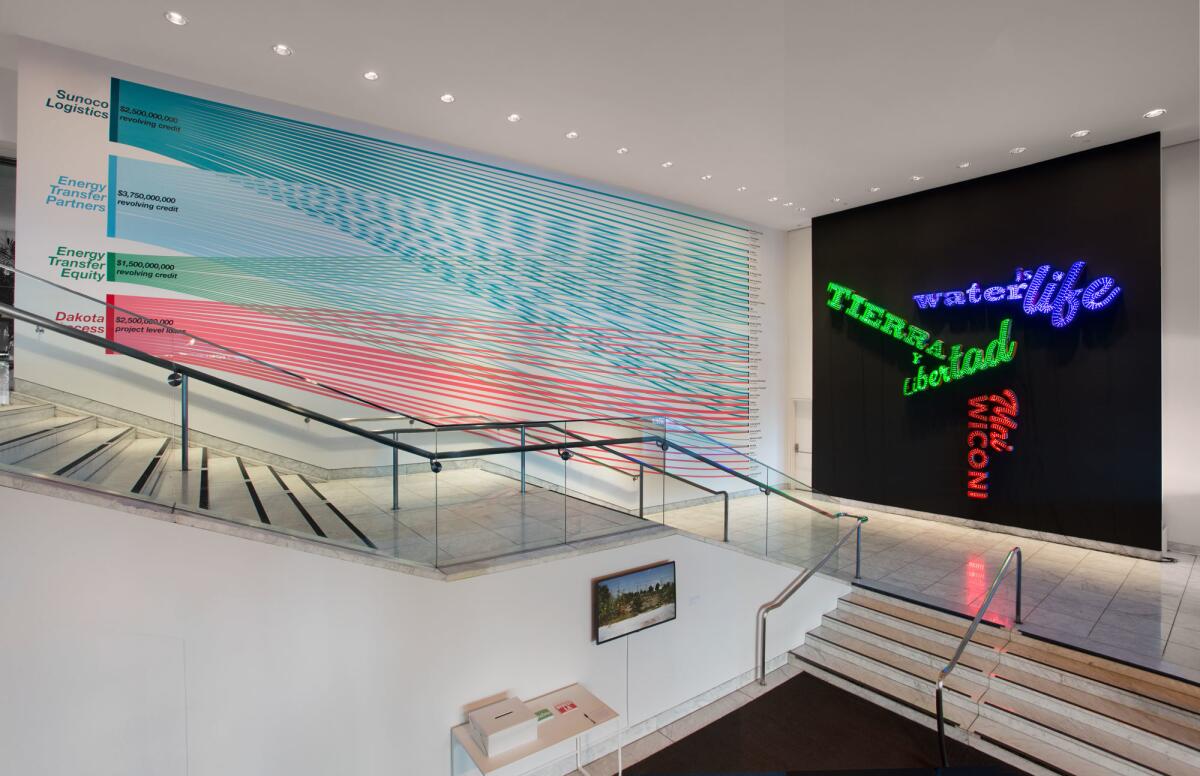
Ongoing exhibitions
“When L.A. Grew Up: Galka Scheyer’s Hollywood on the Eve of World War,” at the Norton Simon Museum. Presented in conjunction with the exhibition “Maven of Modernism: Galka Scheyer in California,” this Friday film series, organized by critic David Kipen, is screening pictures from the ’30s that examine Hollywood’s embrace of European exiles. The series continues this week with a presentation of Joris Ivens “The Spanish Earth.” Also on the line-up for the rest of the month: screenings of “Ninotchka” and Fritz Lang’s “Man Hunt.” Screenings take place on Fridays at 5:15 p.m. through July 21. 411 W. Colorado Blvd., Pasadena, nortonsimon.org.
“Chinese Ceramics From the Los Angeles County Museum of Art,” at the Vincent Price Art Museum.” Part of a new series of partnerships that will take LACMA works to other organizations around L.A., this show represents an overview of Chinese ceramics from the museum’s permanent collection that take the viewer from circa 2500 BC to the 19th century — as well as the museum’s own long history as a collector of Chinese ceramics. Through July 22. East Los Angeles College, 1301 Cesar Chavez Ave., Monterey Park, vincentpriceartmuseum.org and lacma.org.
“A Decolonial Atlas: Strategies in Contemporary Art of the Americas,” at the Vincent Price Art Museum. A group exhibition looks at the legacy of colonialism in everything from historical narratives to the struggle over human resources. The show is broken up into four sections that provide a distinctly indigenous view of identity, notions of time, relationship to the landscape (and the resources they hold) and how history is told and archived. Sounds like a show for our time. Through July 22. East Los Angeles College, 1301 Cesar Chavez Ave., Monterey Park, vincentpricemuseum.org.
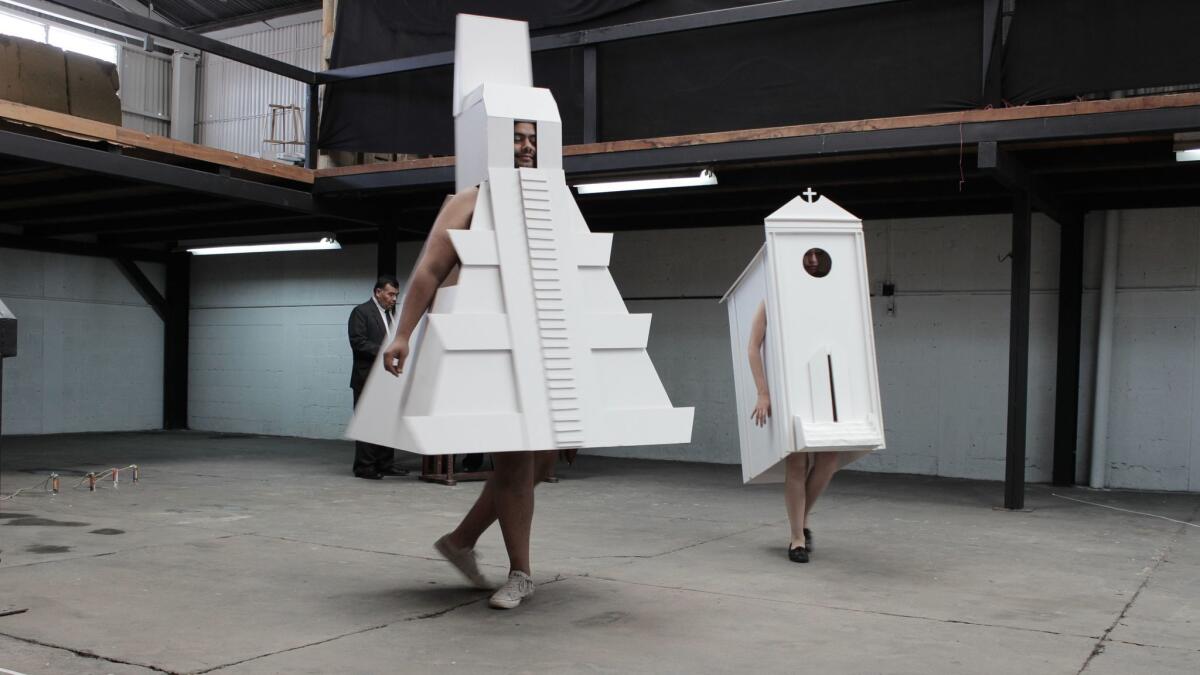
Star Montana, “I Dream of Los Angeles,” at the Main Museum. Montana is an artist known for her stark, formally posed photographic portraits — a style she employs on the everyday denizens of Los Angeles, including people she meets on the streets in her native Boyle Heights as well as others that she has met through open calls. This show gathers various new works. The museum will also have an exhibition devoted to Alice Könitz’s prototypes for new types of museum seating. Through July 23. 114 W. 4th St., downtown Los Angeles, themainmuseum.org.
Carl Andre, “Sculpture as Place: 1958-2010,” at the Museum of Contemporary Art. This retrospective, which was first shown at Dia:Beacon in 2014, surveys the work of a sculptor known for creating minimalist installations out of raw building materials such as bricks, metal squares and wood blocks. The retrospective brings together pieces from throughout the artist’s five-decade career, including sculpture, photography, ephemera and his rare “Dada Forgeries,” a series of ready-made pieces that he has produced sporadically over the course of his life. Also opening at
“Spiral Play: Loving in the ’80s,” at Art + Practice. Al Loving was an artist who drew on sources as varied as free jazz, his family’s quilting traditions and the history of Modern painting when creating abstracted works that riffed on color, form and flatness. But later in life, he turned his attention to depth, using heavy rag paper and other elements to create multidimensional collages infused with bold lines and bright color. This show, organized by Christopher Bedford, the new director of the Baltimore Museum of Art (formerly of LACMA), features 12 of these late monumental collages. Through July 29. 3401 W. 43rd Place, Leimert Park, Los Angeles, artandpractice.org.
“Concrete Poetry: Words and Sounds in Graphic Space,” at the Getty Research Institute. This is an exhibition where words are about words, but also form. Starting in the mid-1950s, the movement known as concrete poetry sought to explore the space between poetry and visual art, creating works that were visual (words in shapes and 3-D form) but also played with the sound and cadence of language. This show features more than 100 works from the lead poets of the era, including Scotsman Ian Hamilton Finlay, the Brazilian Augusto de Campos and U.S. poets Mary Ellen Solt and Emmett Williams. Through July 30. 1200 Getty Center Drive, Brentwood, Los Angeles, getty.edu.
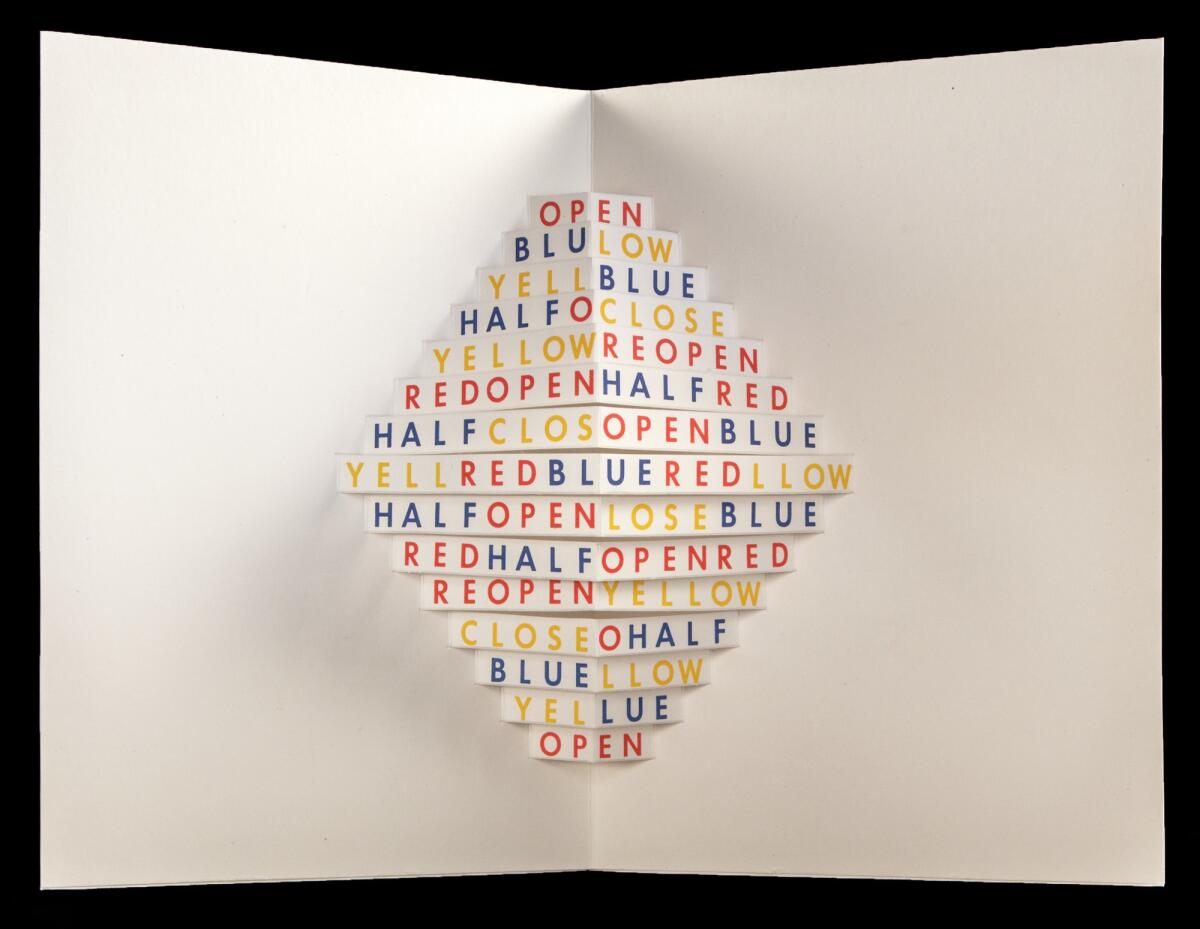
“From the Desert to the Sea: The Desolation Center Experience,” at Cornelius Projects. Today, we have Coachella. In the early ’80s, there was Desolation Center, a series of site-specific concerts held in the desert that were a little bit DIY and a lot of punk. (Audiences would arrive by rented school bus. No one Instagrammed.) Key musicians included Sonic Youth, Meat Puppets and Einstürzende Neubauten, and on-site art was provided by the likes of Survival Research Laboratories. This exhibition at Cornelius Projects features painting, photography, sculpture and other ephemera related to the shows. Through July 30. 1417 S. Pacific Ave., San Pedro, corneliusprojects.com.
“Eyewitness News: Making History in Eighteenth-Century Europe,” at the Getty Museum. In the days before smartphones and cameras and even the daguerreotype, important public events were recorded through painting. This newly-opened show at the Getty has gathered works by the likes of Antonio Canaletto, Bernardo Bellotto, Giovanni Paolo Panini and others that record the important events of the era: a state visit between a king and a pope, the first hot air balloon flight ever recorded in Venice, Italy, and the damage suffered by the German city of Dresden after the Seven Years’ War of the 18th century. A new — or perhaps old? — way of looking at the news. Through July 30. 1200 Getty Center Drive, Brentwood, Los Angeles, getty.edu.
“Black Velvet Punks: Pistols to Plasmatics,” at Velveteria. The esteemed velvet painting museum has a new show up dedicated to the pioneers of punk. Rendered on seductive black velvet are important musicians such as Johnny Rotten, Henry Rollins, Wendy O. Williams and GG Allin. Plus, a special new portrait honors Rodney Bingenheimer, a.k.a. “Rodney on the ROQ,” the influential DJ who left KROQ after 40 years of giving key acts their radio breaks. Through July. 711 New High St., Chinatown, Los Angeles, velveteria.com.
“Nut Art,” at Parker Gallery. This group show harks back to a movement called Nut Art that was founded in the late ’60s by a group of Northern California artists that included painter Roy De Forest, writer David Zack and ceramicist and printmaker David Gilhooly. (The concept took off at Gilhooly’s house in Port Costa as the group was drinking beer.) A number of exhibitions brought together by these artists, whose bright, multihued pieces riffed on the humorous and the slightly surreal. The show at this new apartment gallery brings together exhibitions from a 1972 show, as well as related works by those artists. Through Aug. 5. Email info@parkergallery.com for location and hours, Los Feliz, parkergallery.com.
Joe Ray, “Complexion Constellation,” at Diane Rosenstein Gallery. An exhibition by the L.A.-based artist brings together works from throughout his five-decade career exploring “inner and outer space.” This includes works made from resin and plastic about issues of depth and perception (he was connected to important light and space figures such as Larry Bell), as well as canvases that depict aspects of outer space and, with wryly written words, connect with issues of race. Other ephemera — such as photographs from early performances — are included. Through Aug. 5. 831 N. Highland Ave., Hollywood, dianerosenstein.com.
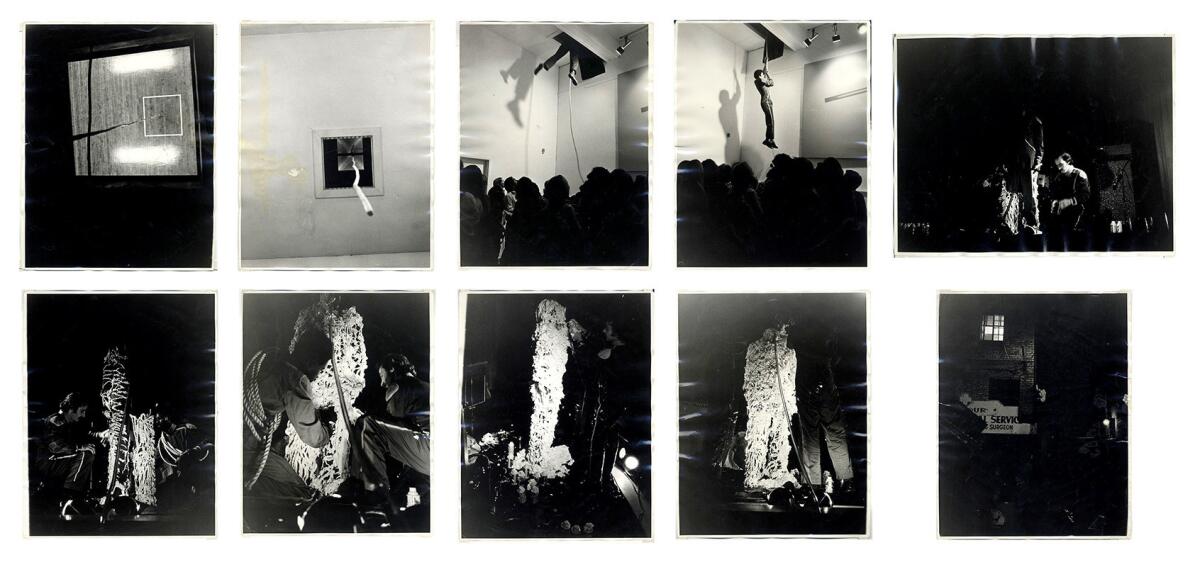
“Flaming June VII (Flaming Creatures),” at Gavlak Gallery. Part of a series of shows that Sarah Gavlak has organized since 1997, this group exhibition, featuring work by Lisa Anne Auerbach, Marnie Weber, Betty Tompkins and Lecia Dole-Recio, takes its inspiration from the 19th century English painter Frederic Leighton’s “Flaming June,” an 1895 canvas of a sleeping woman in a brilliant orange gown. Through Aug. 5. 1034 N. Highland Ave., Hollywood, gavlakgallery.com.
“Octavia E. Butler: Telling My Stories,” at the Huntington. Butler, the pioneering Los Angeles science fiction writer (the first to receive a MacArthur Fellowship, the so-called genius grant) and a writer whose narratives seamlessly blended issues of race and gender with elements of the magical, is the subject of a new exhibition on her life and work. This show at the Huntington (where her archive is kept) gathers roughly 100 items, including notebooks, photographs, journals and first editions of some of her novels, including “Kindred,” one of her best, most riveting works. Through Aug. 7. 1151 Oxford Road, San Marino, huntington.org.
Razvan Boar, EZ Valley, at Nicodim. Sketchy paintings by the Romanian artist riff on pop, landscape and the human figure with splotches of color or layers of transparent paper that produce a collage-like effect. The subjects — cute animals, lounging women — bear a sweet innocence, but a certain knowing quality, too. Through Aug. 12. 571 S. Anderson St., Ste. 2, Boyle Heights, Los Angeles, nicodimgallery.com.
Andrea Zittel, at Regen Projects. Zittel is perhaps best known for creating the High Desert Sites in Joshua Tree, an arts compound that is as much a gathering space as it is an ever-evolving work of art that she also inhabits. This show continues her investigations into the ways in which environment can be shaped and molded in ways that are both industrial and domestic. It also marks the inauguration of a new sculptural work in the desert. Through Aug. 12. 6750 Santa Monica Blvd., Hollywood, regenprojects.com.
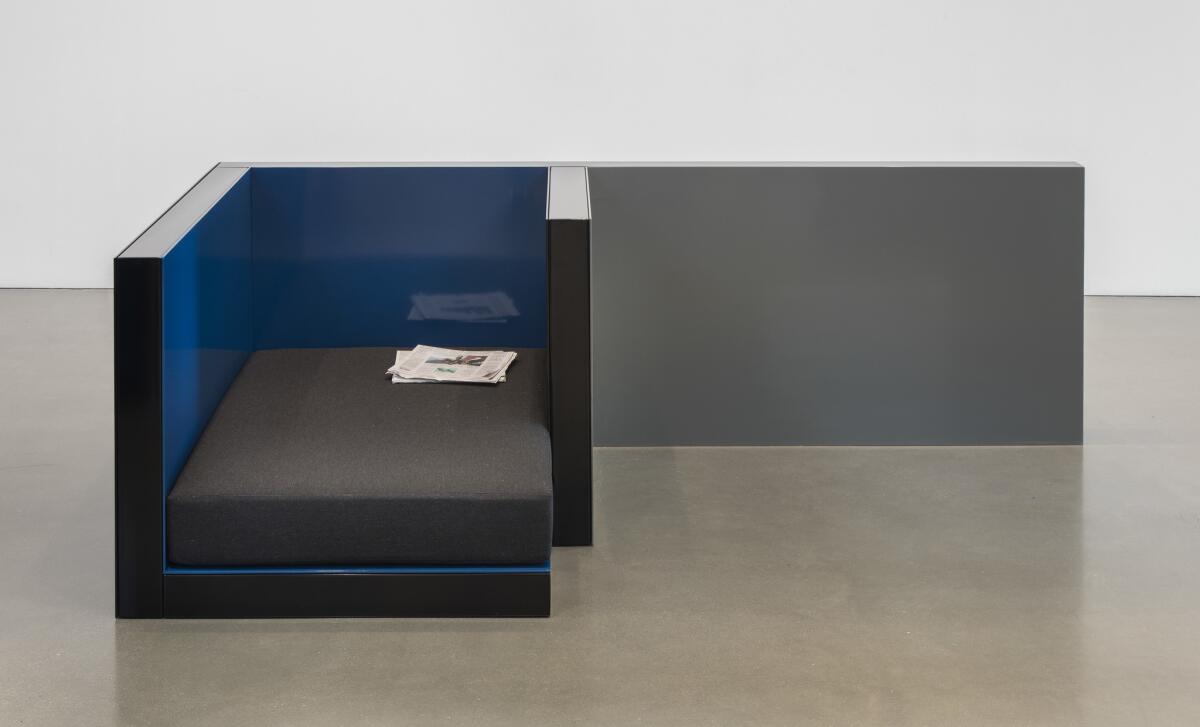
“Instructions to All Persons: Reflections on Executive Order 9066,” at the Japanese American National Museum. At a time when executive orders are transforming U.S. society, it’s a good moment in which to study one of the most notorious ones: President Franklin D. Roosevelt’s Order 9066, which allowed for the incarceration of more than 120,000 Japanese Americans living along the West Coast during World War II. This exhibition brings together historical ephemera from this dark period in U.S. history, as well as works of art and performance that reflect on the issue of internment. Along with this, the museum is presenting “Moving Day,” a nightly public art piece in which exclusion orders are projected on the side of the building. Through Aug. 13. 100 N. Central Ave., downtown Los Angeles, janm.org.
Jimena Sarno, “home away from,” at Los Angeles Contemporary Exhibitions. Employing a series of Hollywood flats — the flat wooden architectural backdrops used on film and television sets — Sarno has constructed an installation that riffs on issues of borders and displacement. Throughout the exhibition, the space will host a series of artist collaborations, including performances and workshops. Through Aug. 13. 6522 Hollywood Blvd., Hollywood, welcometolace.org.
“Now Then: Chris Killip and the Making of In Flagrante,” at the Getty Museum. This exhibition features work from Killip’s groundbreaking book, “In Flagrante,” which documented the impact of deindustrialization on working-class communities in northern England in the 1970s and ’80s. The show includes maquettes, contact sheets and work prints, as well as images form a pair of related projects. A moving ode to industrial towns in decline. Through Aug. 13. 1200 Getty Center Drive, Brentwood, Los Angeles, getty.edu.
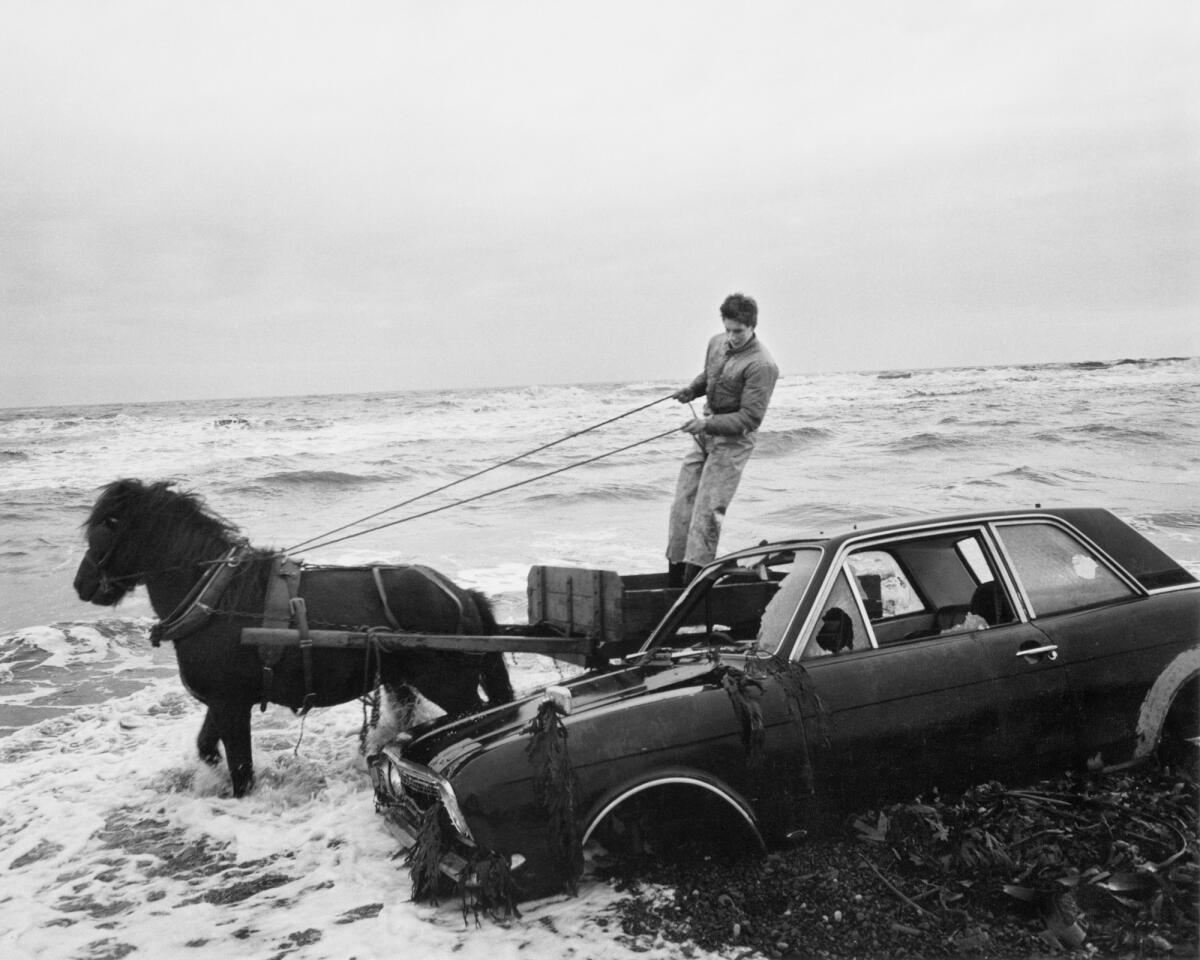
Lucio Muniain, “Are You Skeptical?” at the Grand Central Art Center. The Mexico City artist takes everyday images of brutality that saturate the media and uses them to create works on paper that record, in a more methodical fashion, the issues of violence plaguing the poor, migrants and marginalized communities — a way of re-sensitizing viewers who might be numb to the daily drumbeat of bad news. As part of the exhibition, which will feature dozens of the artist’s drawings, Muniain has also created a large-scale mural. Through Aug. 13. 125 N. Broadway, Santa Ana, grandcentralartcenter.com.
Lauren Greenfield, “Generation Wealth,” at the Annenberg Space for Photography. Greenfield, a filmmaker and photographer, has long explored the issues of affluence and consumerism at the intersection of social status and celebrity culture. The exhibition features 195 color prints that depict the continual aspiration for more. Through Aug. 13. 2000 Avenue of the Stars, Century City, Los Angeles, annenbergphotospace.org.
Marisa Merz, “The Sky is a Great Space,” at the Hammer Museum. This is the first traveling U.S. retrospective of the Italian painter, sculptor and installation artist, covering five decades of innovative work — from her early experiments with Arte Povera (the only female member of the movement) to the enigmatic heads she created in the 1980s and ’90s. The show will include some of her trademark installations from the ’70s too — including pieces made from delicate copper wire, bowls of saltwater and knitting needles. This is the exhibition’s West Coast debut after its display at the Met Breuer in New York City. Through Aug. 13. 10899 Wilshire Blvd., Westwood, hammer.ucla.edu.
Jim Shaw at Blum & Poe. Shaw, who currently has a massive installation on view at the Marciano Art Foundation, is also showcasing a series of works at his Culver City gallery space. This includes drawings on paper, as well as paintings on old theater backdrops that riff on the dark side of politics and popular culture. Through Aug. 19. 2727 S. La Cienega Blvd., Culver City, blumandpoe.com.
Amy Park, “Ed Ruscha’s Nine Swimming Pools and a Broken Glass,” at Kopeikin Gallery. In her previous show at Kopeikin, Park transformed Ed Ruscha’s famous photographic chronicle, “Every Building on the Sunset Strip,” into a sequence of poignant watercolors that rendered that cold photographic document in a human hand. In this series, she takes on the L.A. artist’s book “Nine Swimming Pools and a Broken Glass,” turning Ruscha’s deadpan images of pools into remarkable studies of color, light and design. Through Aug. 19. 2766 S. La Cienega Blvd., Culver City, kopeikingallery.com.
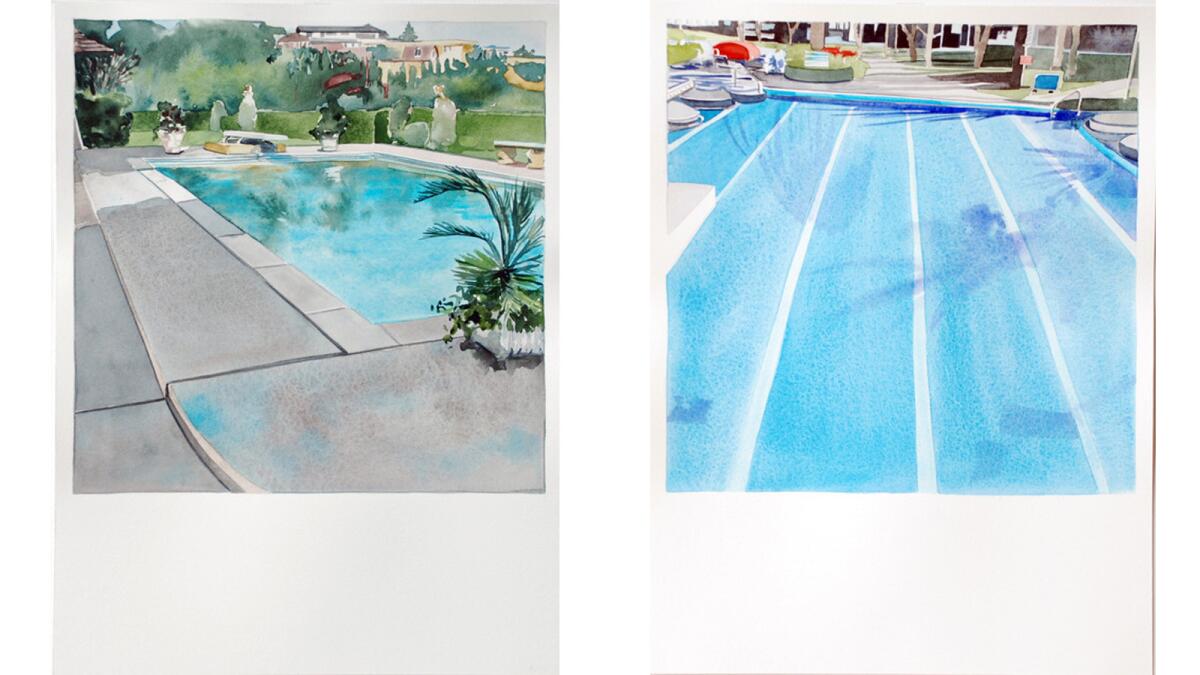
Betye Saar, “Keepin’ It Clean,” at the Craft & Folk Art Museum. A new exhibition by the renowned Los Angeles assemblage artist gathers the washboard pieces that she has made over the course of her career — pieces that reflect on issues of American race and inequity. Also on view is the exhibition “Material as Metaphor,” which features nearly a dozen artists exploring contemporary iterations of fiber art using materials such as vinyl, industrial felt and wire. Through Aug. 20. 5814 Wilshire Blvd., Mid-Wilshire, Los Angeles, cafam.org.
“Chalk Circles,” at REDCAT. A combination of art and performance explores the connection between the two — including the ways in which these forms address movement and gesture and the presence of bodies. The show is organized by REDCAT gallery director Ruth Estevez and LACMA curator José Luis Blondet, and its title is inspired by a 1944 play written by Bertolt Brecht in Los Angeles called “The Caucasian Chalk Circle.” The show includes work by Pilar Aranda, Peio Aguirre, Dora García, Silke Otto-Knapp and Kerry Tribe. Emily Mast performs “Hold Your Tension” in collaboration with Mikaal Sulaiman this Sunday at 5 p.m.The show runs through Aug. 20. Check the website for a full list of performances. 631 W. 2nd St., downtown Los Angeles, redcat.org.
Mary Ellen Carroll, “1963 (Outtakes, Aftermaths and Assassinations,” at Redling Fine Art. The conceptual artist takes the year 1963 as a point of inspiration, indexing the year’s images so that one image represents every day of the year. From these, Carroll will create a painting to represent each day. In her new show at Redling, she is showing six works from these series — “indexed under the subjects of aftermath, altering perception, and assassination.” Through Aug. 26. 6757 Santa Monica Blvd., Hollywood, redlingfineart.com.
“No Justice, No Peace: LA 1992,” at the California African American Museum. A historical exhibition looks at the myriad social and political forces that led to the 1992 riots in the wake of the Rodney King verdict — including a troubled history of police relations in minority communities, a history of housing segregation and the drug war, among other factors. Included in the show are hundreds of images and historic documents, as well as a zoot suit and a ’90s era police cruiser. Through Aug. 27. 600 State Drive, Exposition Park, Los Angeles, caamuseum.org.
“NOEMA,” at the El Segundo Museum of Art. A show about diagramming features at its heart an epic 27-foot piece by Matthew Ritchie that was created in collaboration with the Getty Research Institute and charts the entire history of human diagrams. This was obviously designed for a geek like me. Through Aug. 27. 208 Main St., El Segundo, esmoa.org.
“Living Apart Together: Recent Acquisitions,” at the Hammer Museum. A new installation gathers recent additions to the museum’s permanent collection — gifts from donors and artists, as well as museum acquisitions — with an emphasis on art made over the last decade in Los Angeles. A good opportunity to see what’s been cooking in the old hometown. Through Aug. 27. 10899 Wilshire Blvd., Westwood, Los Angeles, hammer.ucla.edu.
Dennis Hopper, “The Lost Album,” at Kohn Gallery. In addition to being an actor, Hopper was a devoted photographer, who, for a period of 10 years, principally in the ‘60s, carried his camera with him wherever he went. In the process, he captured scenes on the street, celebrities at rest and his artist friends (figures such as Ed Ruscha and Billy Al Bengston). The exhibition is drawn from an archive of more than 400 photographs that sat untouched in a box until after the artist’s death in 2010. An adjacent space is showing works by Hopper contemporaries John Altoon, Wallace Berman, Bruce Conner and others. Through Sept. 1. 1227 N. Highland Ave., Hollywood, kohngallery.com.
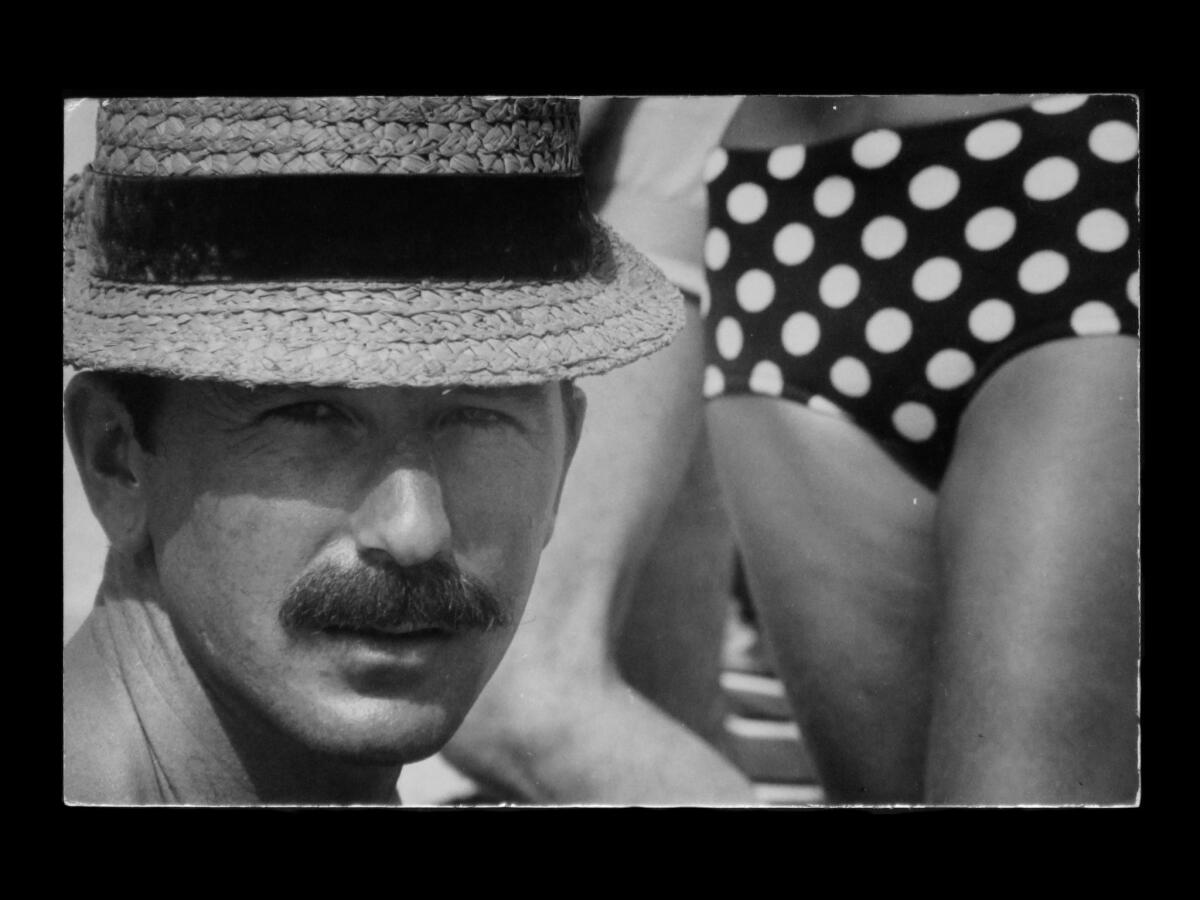
“Frida Kahlo: Through the Lens of Nickolas Murray,” at the Museum of Latin American Art. For almost a decade in the 1930s and ’40s, the Hungarian-born photographer Nickolas Murray photographed Mexican painter Frida Kahlo at home and at work. This exhibition gathers 46 black and white and color photographs of the Mexican artist, as well as copies of the correspondence they exchanged. Through Sept. 3. 628 Alamitos Ave., Long Beach, molaa.org.
2017 California Pacific Triennial, at the Orange County Museum of Art. The latest iteration of OCMA’s biennial looks at issues of architecture and urban design and their ever evolving features. This includes installations by 25 artists from throughout the Pacific Rim, including L.A.-based artist Olga Koumoundouros, known for working with fallow structures; Nancy Popp, who has studied issues of displacement related to the Olympics in Rio de Janeiro; Korea-born artist Haegue Yang, who employs elements of domestic architecture in elaborate installations; and Teddy Cruz, of Estudio Teddy Cruz, in collaboration with Fonna Forman, both of whom run the Cross-Border Initiative at UC San Diego. At a time in which space in cities is growing increasingly contested, it is an ideal time for a show of this nature. Through Sept. 3. 850 San Clemente Drive, Newport Beach, ocma.net.
Luis Tapia, “Cada Mente es un Mundo,” at the Museum of Latin American Art. This solo presentation features new and recent works by the Santa Fe-based artist, who is known for creating work that is inspired by the techniques of traditional craft — but uses it to address a range of modern themes, including Chicano identity. Through Sept. 3. 628 Alamitos Ave., Long Beach, molaa.org.
John Divola, “Physical Evidence,” at Gallery Luisotti. The long-time SoCal artist, who was featured in the most recent Whitney Biennial, is known for his stark pictures of abandoned domestic spaces that often bear wry bits of his own alterations. The show brings together two major bodies of work: the “Five Prints Portfolio” from the 1980s and “Untitled, 1990,” from the following decade — which though seemingly opposite in nature (one bursts with color and objects, the other is abstracted black and white) are both about the thin line between the real and the artificial. Through Sept. 9. An artist’s reception will be held Aug. 5 at 6 p.m. Bergamot Station, 2525 Michigan Ave., No. A2, Santa Monica, galleryluisotti.com.
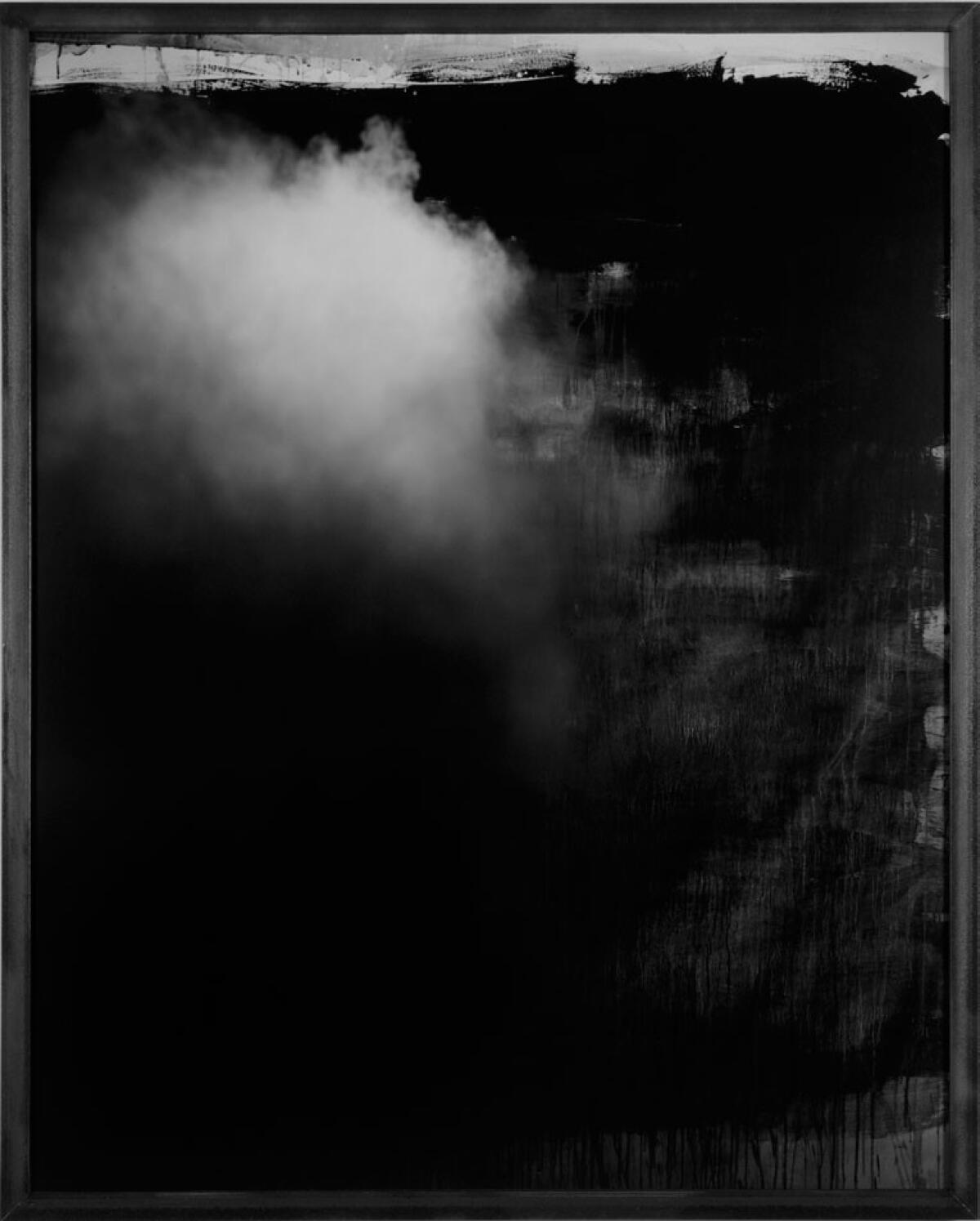
“Los Angeles to New York: Dwan Gallery, 1959-1971,” at the L.A. County Museum of Art. Previously on view at the National Gallery of Art in Washington, this exhibition tracks the legacy of one of the most important postwar galleries in the United States — a space that, for a time, operated in Los Angeles. Its proprietor, Virginia Dwan, wasn’t simply a run-of-the-mill gallerist, she was a patron, supporting artists with stipends and studios. She staged one of the earliest pop art exhibitions and she was an important supporter of minimalism. Plus, she was key in helping artists execute the most outrageous works — including important land art pieces such as Robert Smithson’s “Spiral Jetty.” Talk about thinking big. Through Sept. 10. 5905 Wilshire Blvd., Mid-Wilshire, www.lacma.org.
“Illuminating Women in the Medieval World” at the Getty Museum. Drawn from the museum’s collection of medieval illuminations, this exhibition pulls together images that represent the medieval woman in various guises: as biblical heroines, saints and nuns. The show also explores the ways in which women contributed to the production of manuscripts during that era. Through Sept. 17. 1200 Getty Center Dr., Brentwood, Los Angeles, getty.edu.
Paul McCarthy, “Spinoffs, Wood Statues, Brown Rothkos,” at Hauser & Wirth. McCarthy is known for tackling the grotesque and the excessive in American culture. This show features nine monumental carved black walnut sculptures that are part of his continuing examination of the 19th century German fairy tale “Snow White,” along with Disney’s more Modern interpretation — but in ways that are hardly about happy endings. Through Sept. 17. 901 E. 3rd St., downtown Los Angeles, hauserwirthlosangeles.com.
Sean David Christensen and Michael Nannery, at the Grand Central Art Center. On view is video by Sean David Christensen that explores his father’s manic depression and an experimental interior garden by Michael Nannery. Through Sept. 17. 125 N. Broadway, Santa Ana, grandcentralartcenter.com.
Jim Shaw, “The Wig Museum,” at Marciano Art Foundation. Shaw is a Los Angeles artist who has long been obsessed with marginal religious movements and secretive social orders. Which makes him the perfect artist to take over the cavernous theater at the Marciano Art Foundation, which once served as a masonic temple. (Among the various collections in his studio, Shaw maintains a box of masonic wigs.) For this installation, he has employed vintage masonic theater backdrops that were found at the space for a sprawling diorama that riffs on the themes that preoccupy him most: capitalism and its discontents. Also on view is an exhibition of works from Marciano’s private collection. Through Sept. 17. Admission is free but advance reservations are required. 4357 Wilshire Blvd., Windsor Square, Los Angeles, marcianoartfoundation.org.
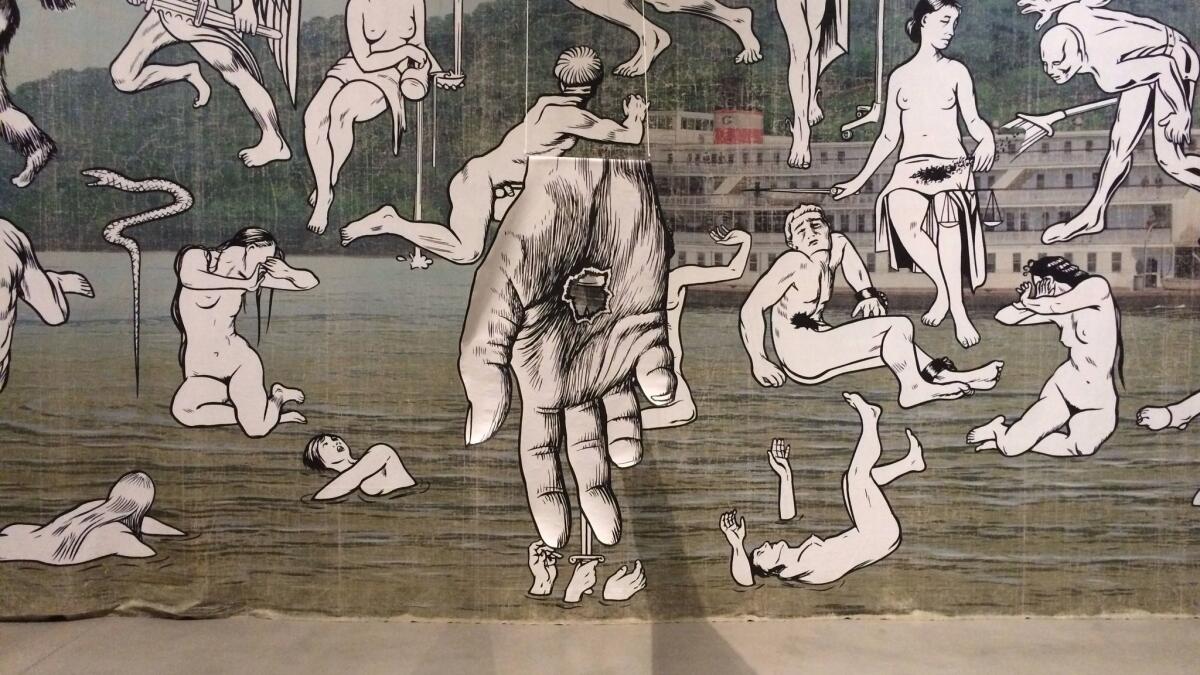
“Down and to the Left: Reflections of Mexico in the NAFTA Era,” at Armory Center for the Arts. A group exhibition featuring work by a range of Mexico and U.S-based artists takes as its point of departure the ’90s NAFTA years, a period of great change, when Mexico came out of a relative period of isolation, and when the local and the global became one. It was also a time when the Zapatista rebellion against the government had galvanized indigenous people and international audiences. Many of the works on view by artists such as Javier Téllez, Nao Bustamante, Lourdes Grobet and Pedro Mayer deal with this climate of economic and political unrest. Through Sept. 17. 145 N. Raymond Ave., Pasadena, armoryarts.org.
Phil Dike, “At the Edge of the Sea,” at the Laguna Art Museum. Raised in Redlands in the early part of the 20th century, Dike was a story designer for Walt Disney (working on animated classics such as “Fantasia”) and also taught at Chouinard (which ultimately became CalArts), and later, Scripps College. But he also painted — watercolor sketches that captured wind, sand and sea. At first, he did this in literal ways. Later in his career, he reached toward the purely abstract. This show gathers 40 years of works from the California regionalist, featuring more than 60 paintings, including many that have never before been seen. Through Sept. 24. 307 Cliff Dr., Laguna Beach, lagunaartmuseum.org.
“Maven of Modernism: Galka Scheyer in California,” at the Norton Simon Museum. This exhibition examines the life of a key art dealer: Galka Scheyer, who embraced Modern work early in the 20th century and was partly responsible for bringing the artists known as the “Blue Four” to prominence in the United States. (They were Lyonel Feininger, Alexei Jawlensky, Paul Klee and Vasily Kandinsky.) Born in Germany in the late 19th century, she ultimately settled in California, where she lived in San Francisco and later in Hollywood, where she found an audience that was open to the work and its ideas. The exhibition contains work by the Blue Four, but also objects and other artworks that connect to Scheyer’s personal and professional life. Through Sept. 25. 411 W. Colorado Blvd., Pasadena, nortonsimon.org.
Robert Grosvenor, at Maccarone. The gallery is showing three large-scale sculptures by the New York City artist, known for producing works that often seem to defy gravity. (Times art critic Christopher Knight notes the power of the piece he currently has on view at LACMA as part of the group exhibition “Los Angeles to New York: Dwan Gallery, 1959-1971.”) These more recent works see him mixing his signature industrial materials with found and other objects in ways that riff on materials and balance. Through Sept. 30. 300 S. Mission Road, Boyle Heights, maccarone.net.
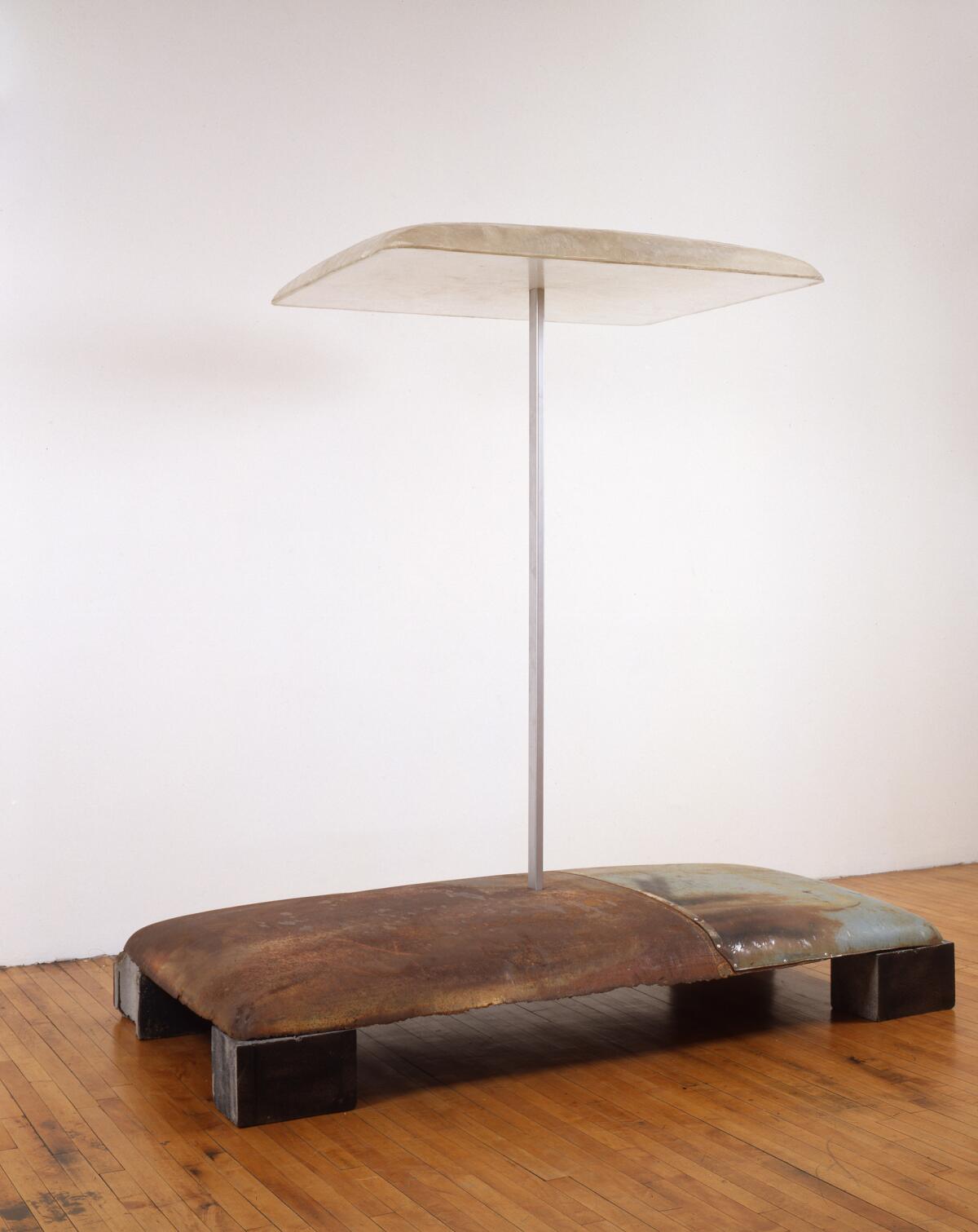
“Sea Sick in Paradise,” at the Depart Foundation Malibu Village. A group show organized by Amy Yao looks at that righteous point where art and surfing intersect — touching on surf culture and history, as well as environmental concerns. This include a mix of pieces by Billy Al Bengston, Jeff Ho, Stanya Kahn, Margaret Kilgallen, Barry McGee, Roe Etheridge and Tin Ojeda — among many others — at a pop-up space in Malibu. Through Sept. 30. 3822 Cross Creek Road, Malibu, departfoundation.com.
“Home — So Different, So Appealing,” at the Los Angeles County Museum of Art. This is the first of the Getty-funded Pacific Standard Time: Los Angeles / Latin America series — and it couldn’t land at a better social and political moment. The show, a collaborative effort between LACMA, the Museum of Fine Arts Houston and UCLA’s Chicano Studies Research Center, thoughtfully explores the way in which Latino and Latin American artists have used elements of the domestic to comment on issues of the personal and the political in art. The assembled works — by figures such as Felix Gonzalez Torres, Luis Camnitzer and Leyla Cardenas — include installations that ruminate on immigration, urban architecture, control and subtle resistance. The conversation piece? Perhaps Daniel Joseph Martinez’s recreation of a spliced Unabomber cabin painted in Martha Stewart shades. Through Oct. 15. 5905 Wilshire Blvd., Mid-Wilshire, Los Angeles, lacma.org.
“¡Mírame! Expressions of Queer Latinx Art,” at La Plaza de Cultura y Artes. A group show brings together artists from various Latino backgrounds who explore issues of sexuality and identity in their art, including Xandra Ibarra, Alma Lopez, Julio Salgado and noted photographer Laura Aguilar, known for the striking portraits she creates of herself and others. Through Dec. 9. 501 N. Main St., downtown Los Angeles, lapca.org.
“Neo Native: Toward New Mythologies,” at the Maloof Foundation. This exhibition features more than 40 works by 11 contemporary U.S. artists with Native American roots — including painting, photography, ceramics and more. This includes works by painter Gerald Clarke Jr., ceramicist Diego Romero, conceptual artist Cannupa Hanska Luger and photographer Cara Romero. Opens Sunday and runs through Jan. 7. 5131 Carnelian St., Alta Loma, malooffoundation.org.
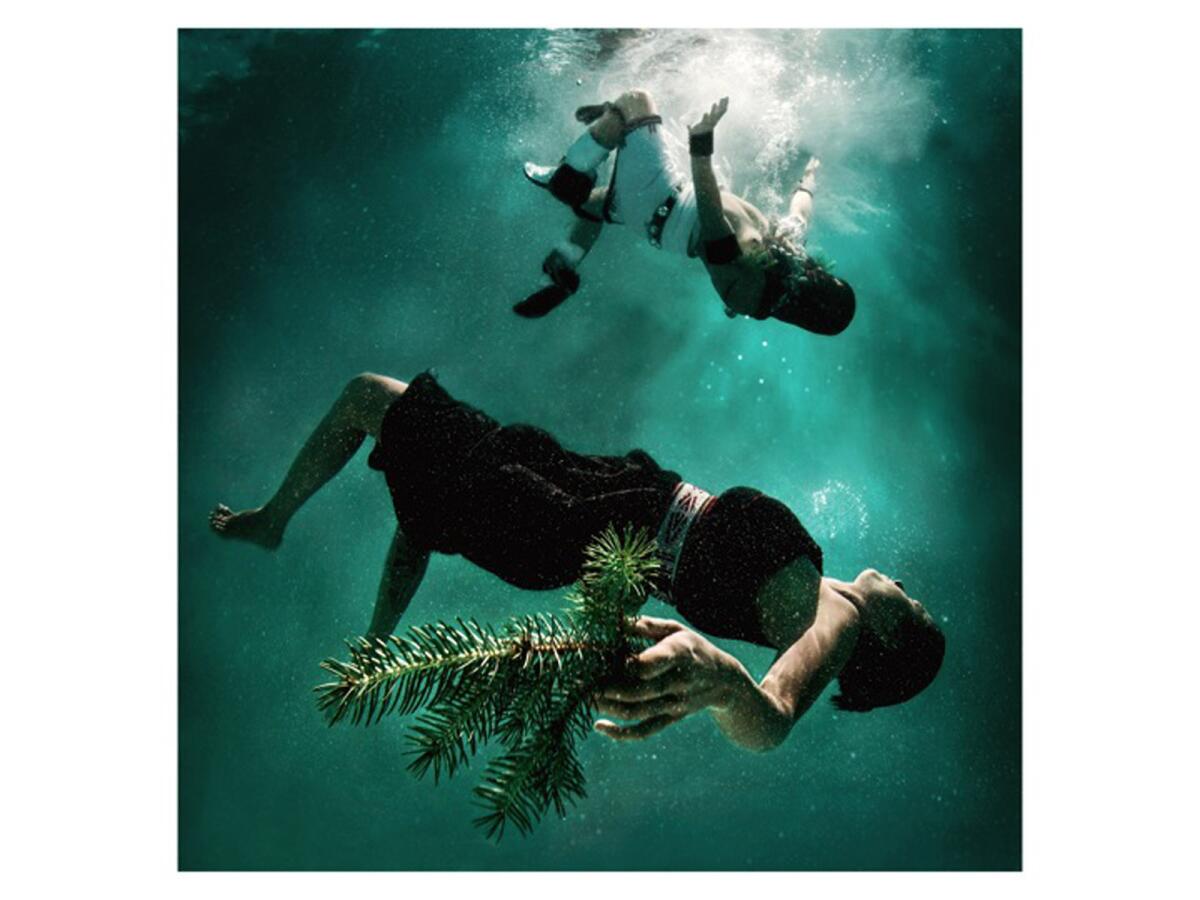
Standing Rock: Art and Solidarity, at The Autry. The Standing Rock protest in North Dakota attracted an unprecedented protest that brought together native and non-native cultures in a unified front against the proposed Dakota Access pipeline. This exhibition gathers ephemera from that action, including poster art, clothing and photographs. Through Feb. 18. 4700 Western Heritage Way, Griffith Park, Los Angeles, theautry.org.
“Artists of Color,” at the Underground Museum. As part of its ongoing partnership with the Museum of Contemporary Art, the Arlington Heights arts space has put together an exhibition that focuses on color — on its aesthetics, as well as the roles color can play as a symbol, affecting the way it’s perceived both socially and politically. The show includes works by an array of artists, including Ellsworth Kelly, Dan Flavin, Lita Albuquerque, EJ Hill, Felix Gonzalez-Torres, Josef Albers, Carmen Herrera and Noah Davis (the late founder of the Underground Museum). It’s a striking look at color seen anew. On long-term view; no closing date set. 3508 W. Washington Blvd., Arlington Heights, theunderground-museum.org.
“Becoming America: Highlights From the Jonathan and Karin Fielding Collection,” at the Huntington Library. The Huntington has just redone its American art galleries and now features a new expansion by architects at Frederick Fisher and Partners that adds eight rooms for display. Up first is an exhibition devoted to the Fielding Collection, featuring more than 200 works of 18th and early 19th century American art, including paintings, furnishings and decorative art. Through Oct. 28, 2019. 151 Oxford Road, San Marino, huntington.org.
“L.A. Communities Through the Eyes of Artists,” in the Passageway Gallery at Union Station. For 15 years, L.A.’s principal train station has been showcasing work that reveals the city through the eyes of its artists. This year, it is showing a series of newly commissioned pieces — including Shizu Saldamando’s depiction of Little Tokyo, Sam Pace on Leimert Park and Artemio Rodriguez on East L.A. On view indefinitely. Union Station, 800 N. Alameda St., downtown Los Angeles, metro.net.
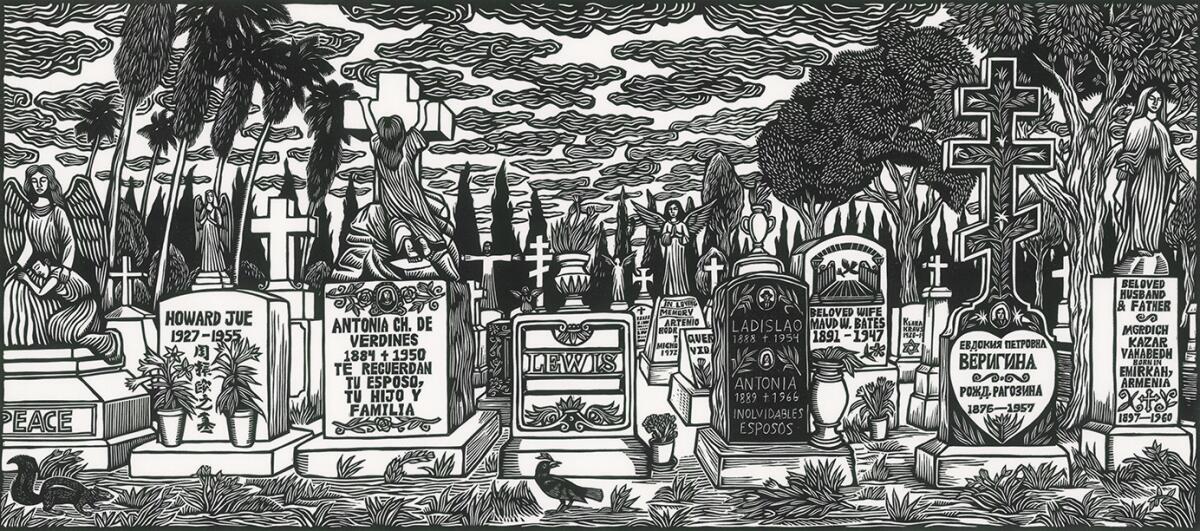
Alejandro G. Iñárritu, “Carne y Arena,” at LACMA. The gripping new virtual reality experience by the Academy Award-winning director places the participant in the shoes of migrants making the arduous trek through the Sonoran desert to reach the United States. This may sound like the trivialization of what can be a fatal journey, but it is not. Iñarritu has considered all of the elements that surround his virtual reality video to humanize the story of immigration on the U.S.-Mexico border. I wrote about my experience of the piece in June. It’s not cheap (it’s a $30 special admission, in addition to regular museum fees) but it’s worth every penny. On view indefinitely. 5905 Wilshire Blvd., Mid-Wilshire, Los Angeles, lacma.org.
Daniel Hawkins, “Desert Lighthouse.” The Los Angeles-based artist is obsessed with producing works that toy with ideas of grandiosity, failure and gestures that border on the Sisiphyean. (One of his goals as an artist is to ultimately build a scale replica of Hoover Dam.) Now Hawkins has installed a 50-foot tall, fully functioning lighthouse in the Mojave Desert in the vicinity of Barstow. The piece even features a light to guide travelers through this rugged landscape. Directions and coordinates can be found on the website. On view indefinitely, Hinkley, Calif., desertlighthouse.org.
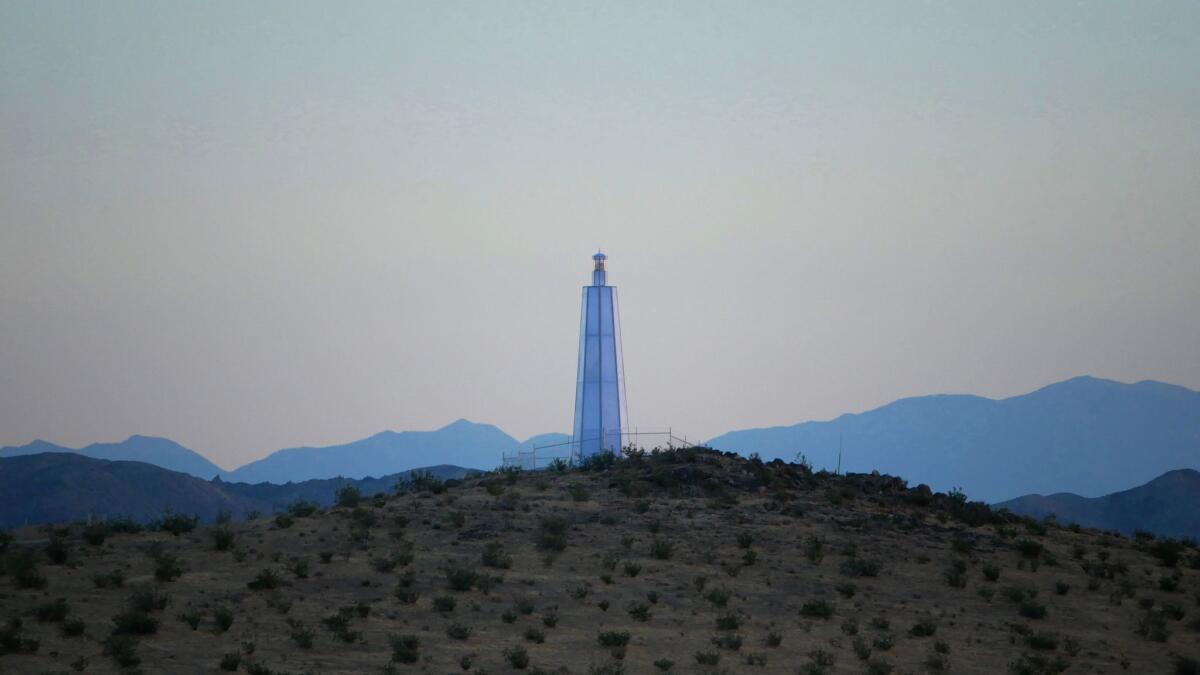
Sign up for our weekly Essential Arts & Culture newsletter »
Twitter: @cmonstah
The biggest entertainment stories
Get our big stories about Hollywood, film, television, music, arts, culture and more right in your inbox as soon as they publish.
You may occasionally receive promotional content from the Los Angeles Times.








